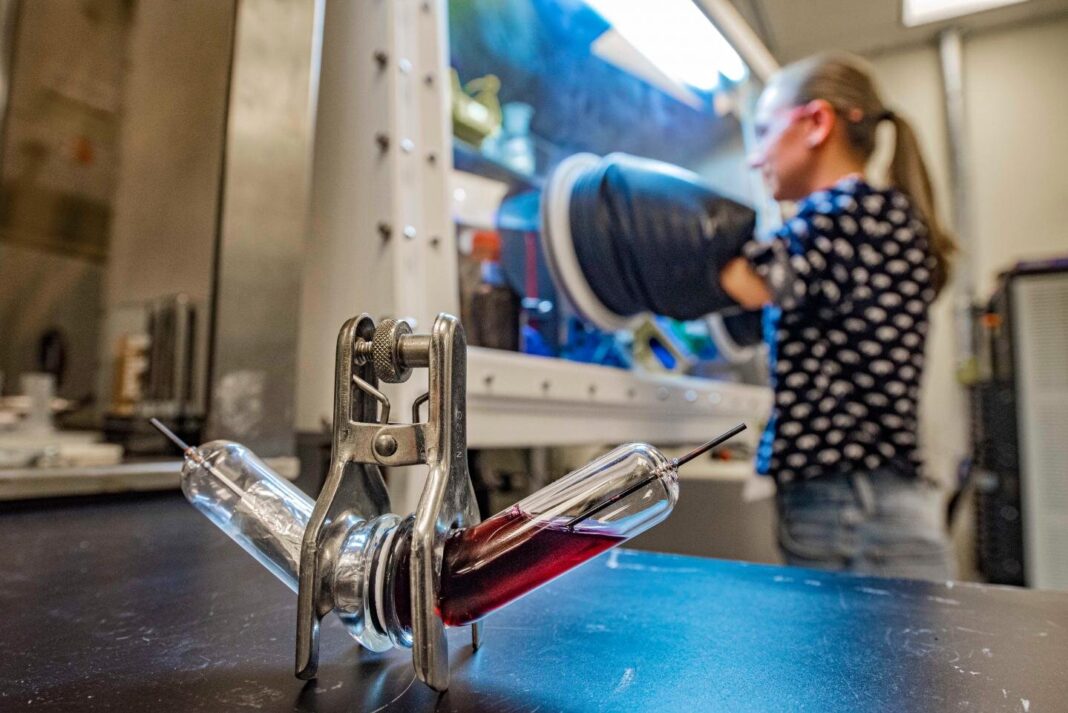Researchers at Sandia National Laboratories have designed a new class of molten sodium batteries for grid-scale energy storage, Tech Xplore reports. Molten sodium batteries have been used for many years to store energy from renewable sources, such as solar panels and wind turbines. However, commercially available molten sodium batteries, called sodium-sulfur batteries, typically operate at 520-660 degrees Fahrenheit. Sandia’s new molten sodium-iodide battery operates at a much cooler 230 degrees Fahrenheit instead. “We’ve been working to bring the operating temperature of molten sodium batteries down as low as physically possible,” said Leo Small, the lead researcher on the project. “There’s a whole cascading cost savings that comes along with lowering the battery temperature. You can use less expensive materials. The batteries need less insulation and the wiring that connects all the batteries can be a lot thinner.” However, the battery chemistry that works at 550 degrees doesn’t work at 230 degrees, he added. Among the major innovations that allowed this lower operating temperature was the development of what he calls a catholyte. A catholyte is a liquid mixture of two salts, in this case, sodium iodide and gallium chloride. A basic lead-acid battery, commonly used as a car ignition battery, has a lead plate and a lead dioxide plate with a sulfuric acid electrolyte in the middle. As energy is discharged from the battery, the lead plate reacts with sulfuric acid to form lead sulfate and electrons. These electrons start the car and return to the other side of the battery, where the lead dioxide plate uses the electrons and sulfuric acid to form lead sulfate and water. For the new molten sodium battery, the lead plate is replaced by liquid sodium metal, and the lead dioxide plate is replaced by a liquid mixture of sodium iodide and a small amount of gallium chloride, said Erik Spoerke, a materials scientist who has been working on molten sodium batteries for more than a decade. When energy is discharged from the new battery, the sodium metal produces sodium ions and electrons. On the other side, the electrons turn iodine into iodide ions. The sodium ions move across a separator to the other side where they react with the iodide ions to form molten sodium iodide salt. Instead of a sulfuric acid electrolyte, the middle of the battery is a special ceramic separator that allows only sodium ions to move from side to side, nothing else.
https://techxplore.com/news/2021-07-batteries-grid-scale-energy-storage.html


